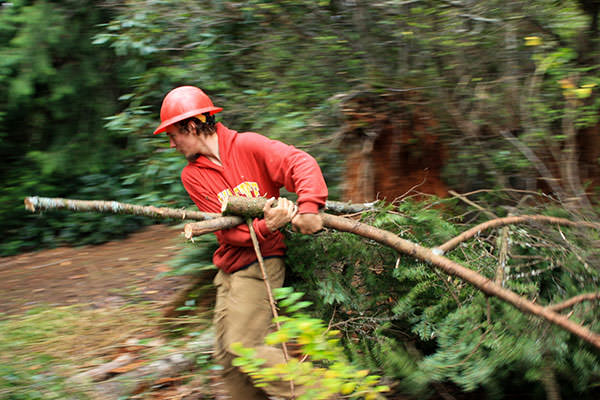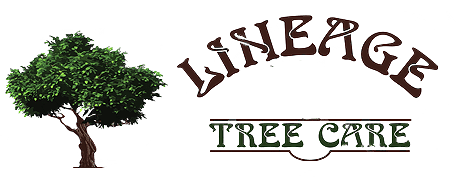And certainly not something to take lightly or be performed by an amateur.
According to the US Bureau of Labor Statistics, there are 200 tree-related fatal injuries on average every year in the United States. In 2012, there were 60 injury-related deaths for tree maintenance, with another 120 fatal injuries in forestry and logging services.1 In 2011, the BLS reported 83 tree maintenance injury-related deaths and 125 forestry and logging fatalities from injuries in the field.2 In 2010, 120 forestry and logging service injury-related deaths were reported, with an additional 60 tree maintenance deaths.3 Injury causes included contact with objects and equipment like chainsaws or axes, falling from trees, and transportation incidents.4 [Source]
Is that enough info to make you hire a pro?

There are a wide variety of different dangers associated with removing trees. Without the proper equipment, homeowners can run the risk of hurting themselves or outbuildings. Weakened limbs can be uneasy support systems and can lead to falls, breaks, and tragedies you had not planned for.
What about power lines? If the tree falls back towards a power or telephone line, electrocution can be imminent. Some trees could be home to poisonous insects and plants, which could lead to a hospital visit if not removed properly. This is why we were heavy-duty gloves and protective gear when scaling trees, removing limbs, and falling the tree itself. Trees can also have potentially poisonous chemicals leaking into them from nearby power lines, which is why an inspection beforehand is essential to the security of everyone involved, pets, animals, and property. If the tree is dead or has rotting wood on the inside, it can make the main trunk unstable and unpredictable when calming down. A hollowed out trunk could increase these risks. If you see any signs of rot in your tree don’t wait until it’s already dead to have it removed.
As a professional, we not only inspect the tree for all of these hazards but prepare the space as well. We make the right cuts in the trunk and in the limbs to help it fall exactly where we want it to. We are also covered in protective gear before proceeding with the tree removal job. Our head, eyes, face, hearing, footwear, and legs are all protected from operating chainsaws and of course, we take precautions when scaling a tree against any poisons or tree debris.
The weather can also play a huge factor in securely of removing a tree. High winds, rain, or other inclement weather could put our workers and your property in harm’s way so we will be able to tell if rescheduling is the better option. We make sure to take the tree down in the safest way possible leaving plenty of room for the fall.
Of course, this is our job, but we strongly recommend that homeowners not familiar with how to remove a tree do not attempt this themselves. Simply give us a call for an over the phone estimate or we can come out and inspect the tree for damage, rot, pests, and the safest way to properly remove the tree.
References
- “Fatal occupational injuries by occupation and event or exposure, All U.S., 2012” (PDF). US Bureau of Labor Statistics.
- “Fatal occupational injuries by occupation and event or exposure, All U.S., 2011” (PDF). US Bureau of Labor Statistics.
- “Fatal occupational injuries by occupation and event or exposure, All United States, 2010” (PDF). US Bureau of Labor Statistics.
- Wiatrowski, William J. “Fatalities in the Ornamental Shrub and Tree Services Industry”. US Bureau of Labor Statistics. 2005-07-26.
